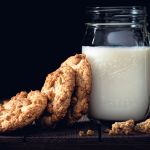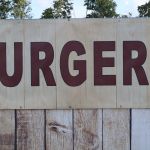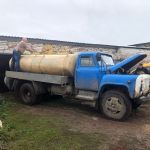Rauwe melk.
Beste discussieleden: Consumptie van rauwe melk wordt in verband gebracht met gezondheidsrisico's voor de mens, onder meer bacteriologische besmettingen. Er komen echter ook steeds vaker aanwijzingen voor gezondheidsbevorderende effecten, bijvoorbeeld bij mensen met een allergie. Het praktijknetwerk "Rauwemelk.net''heeft en website ontworpen om geïnteresseerde boeren en burgers van informatie omtrent rauwe melk te voorzien. Zo staan er ook bedrijven op die rauwe melk verkopen.Bron: Veeteelt november 1 blz 77.
Website: [www.rauwemelk.net]
De beste boeren staan aan wal
Hebben de trefwoorden melk en burgers geen geheimen voor jou? Dan kunnen we jouw kennis en inzicht goed gebruiken! Of je nu actief bijdraagt door foto's, video's, topics of reacties te plaatsen, of je zorgt er middels de stemknoppen voor dat de beste reactie naar boven borrelt.. Jouw kennis en inzicht m.b.t. de agrarische sector kunnen deze site nét dat beetje beter maken. Maak ook een (gratis) account aan!













Laatste reactie
Reacties
N.B.: Ik heb 't zelf ook niet zo op rauw.
-------------------------------------------------------
> dus ook de goeden
Idd CS, misschien is het juist de truc om melk te produceren met meer goede dan kwade bacterien zodat het op die manier gerust "rauw" geconsumeerd kan worden. Yoghurt is (hoe vreemd het ook klinkt) ook 1 en al bacterien maar wel een pak vol met goede bacterien en daardoor supergezond
Ik heb de vraag voorgelegd bij een bedrijf dat in deze techniek is gespecialiseerd. ( wordt vervolgd, hoop ik).
[www.lenntech.nl]
Curieus: Kasgroente: [www.stichtingmilieunet.nl]
1 keer gewijzigd. Laatste wijziging: 24/11/2010 10:33 door Wimsumar.
[www.westfalia.com]
[www.intmp.com]
1 keer gewijzigd. Laatste wijziging: 25/11/2010 14:31 door Farmer.
CHEMICAL AND BIOLOGICAL ENGINEERING DEPARTMENT SEMINAR SERIES
Decontamination of Milk by Pulsed UV Light and
Infrared Heating
Presented by: Dr. Kathiravan Krishnamurthy, Alabama A&M University
Time: Wednesday, October 29; 3:15 – 4:30 pm
Location: Perlstein Hall Auditorium
Abstract
Food-borne diseases are estimated to cause approximately 76 million illnesses, 325,000
hospitalizations, and 5,200 deaths annually in the United States leading to several billion dollar
loss. Conventionally, heat treatment is used for inactivation of pathogenic and spoilage
microorganisms in food. Increased consumer demand for fresh-like foods and industries’ thirst to
minimize the total cost of food processing, propel researchers to investigate the efficacy of
various novel food processing technologies for enhancing food safety. Currently, the efficacy of
high pressure processing, pulsed UV light, pulsed electric field processing, infrared heating,
microwave radiation, pulsed electric field, magnetic field, and ohmic heating are being
investigated by researchers around the world. This presentation will be focusing on the efficacy
of pulsed UV light and infrared heating for inactivation of Staphylococcus aureus (a pathogenic
microorganism) in milk.
Pulsed UV light refers to the broad-band spectrum in the wavelength range of 100 to 1,100 nm. It
is proved to inactivate microorganisms up to six times faster than continuous UV light. In this
study, pulsed UV light completely inactivated Staphylococcus aureus in milk. Pulsed UV light is
also proved to reduce milk allergens and increase vitamin D content. Therefore, pulsed UV light
can serve as a potential milk pasteurization technique which can: i) inactivate milk allergens, ii)
inactivate pathogenic microorganisms, and iii) enhance vitamin D content.
The inactivation mechanism of pulsed UV light was also investigated using transmission electron
microscopy and Fourier transform infrared spectroscopy in order to better understand the
process. The results indicated that pulsed UV light treatment can effectively inactivate
Staphylococcus aureus. Even a 5-sec exposure to pulsed UV light resulted in structural damages
(damage to the cell wall, cytoplamic membrane damage, leakage of cellular contents) to the
bacterial cell.
Far-infrared radiation (3 to 1,000 ?m) can be successfully used for inactivation of pathogens, as
the absorption of energy by microorganisms and food components is high in this region. Infrared
heating of milk resulted in up to 8.41 log10 CFU/ml reduction in the population of Staphylococcus
aureus. Therefore, infrared heating can also be potentially used for milk pasteurization. Infrared
heating is proved to be cost effective as it can reduce the energy consumption up to 44% for
various food products compared with conventional heating.
In conclusion, the results showed that pulsed UV light and infrared heating can be potentially
used for milk pasteurization with further optimization. These technologies are also expected to be
effective against various pathogenic microorganisms present in other food products.
[www.iit.edu]
" In this
study, pulsed UV light completely inactivated Staphylococcus aureus in milk. Pulsed UV light is
also proved to reduce milk allergens and increase vitamin D content. Therefore, pulsed UV light
can serve as a potential milk pasteurization technique which can: i) inactivate milk allergens, ii)
inactivate pathogenic microorganisms, and iii) enhance vitamin D content. "
Uv licht vernietigd compleet Staphylococcus aureus in melk en kan daarom gezien worden als een potentieele manier om te pasteuriezeren, het maakt melk allergieen inactief, maakt pathogenic microorganisms inactief en verhoogd vit. D
Dit is best wel intressant.
1 keer gewijzigd. Laatste wijziging: 25/11/2010 14:59 door Farmer.
By Oliver Nieburg, 02-Jul-2010
Related topics: Processing
Ultraviolet light technology will be touted as an environmentally friendly alternative to heat pasteurisation for milk in an Industrial Energy Efficiency Accelerator (IEEA) report due in the coming weeks.
Dairy UK, in collaboration with the Carbon Trust, recently held workshops to discuss alternatives to the energy consuming thermal process used for milk pasteurisation. Dairy UK environment manager Fergus McReynolds told DairyReporter.com that the most viable substitute could be UV pasteurisation.
This alternative subjects milk to precise frequencies of wave lengths of light to interact with DNA and stop its ability to reproduce. The advantages and drawbacks of the new technology have been seen by this publication ahead of the IEEA’s report.
Why Ultraviolet?
Though exact efficiency savings of UV technology will be detailed in the report, it is anticipated that the UV alternative will consume less energy than the existing heat technique.
UV technology has been used in other industries for photo purification of wine, sugar syrups and fruit juices and also as a final sterilization process in large scale water treatment facilities.
It has also been used for milk pasteurisation in South Africa on a limited scale allowed by local authorities and was trialled in the US where it was found to increase milk shelf-life by 30 per cent, according to Dairy UK.
It is believed that the process would involve minimal plant modification as existing pipework can remain relatively unchanged and the only consumable needed is electricity. Large scale equipment has already been manufactured for other industries and incorporated into factories.
The technique is also considered fairly well researched and the effects on microbial levels within milk are believed to be understood and have been compared with thermal techniques.
It has been suggested that UV technology could be used simultaneously with thermal pasteurisation to increase shelf-life without amending legislation. McReyolds said this could allow dairies to incorporate UV equipment gradually.
Limitations
The Dairy UK environmental spokesperson warned further trials were needed as there are no commercial demonstrations of UV milk processing to date. He added that, since current UK food safety regulations only permits pasteurisation by thermal means, it could be some time before the technique is used as the sole process for destroying pathogens in raw milk. It may even require EU approval, he said.
The required dosage needed in order to pass through entire opaque liquid is also uncertain and it has been suggested that a control system to cater for changing the exposure with specific grades will be required.
There would undoubtedly be cost implications in existing systems, but it is at this stage unclear whether potential energy savings could outweigh removal costs. The report will give an indication of the cost of removing obsolete machinery.
Other alternatives
Microwave and pulsed electric field pasteurisation will also be explored in the IEEA’s report. While industrial microwaves are used throughout the industry, it is believed that unless the carbon associated with electricity could be reduced, the process would use more energy than the current system.
Pulsed electric field technology is a cold sterilisation process where bacteria and spores are destroyed by polarizing and stretching them to destruction or through their electrical breakdown. The product has been commercially available for the pasteurisation of fruit juices, but McReynolds said the process could be very costly to implement.
[www.foodproductiondaily.com]
"It has also been used for milk pasteurisation in South Africa on a limited scale allowed by local authorities and was trialled in the US where it was found to increase milk shelf-life by 30 per cent, according to Dairy UK. "
Melk pasteurizering met UV-licht is op beperkte schaal ingezet in Zuid-Afrika en onderzocht in de US, de houdbaarheid nam toe met 30%
Ik heb ook wel ervaring met water UV behandelen.
Ben wel benieuwd of Wim nog een ander antwoord krijgt!
Dat lichtblauwe water uit die pakken is niet naar binnen te krijgen!
Verkoop is voor eigen risico, maar nooit klachten gehad en buurman zweert erbij. (het positieve zweren he)
P.S.: Deftige dames gaan er van ''spinnen en miauwen''.:[katten.startpagina.nl]
iedere dag krijgen 5 katten hier een halve liter melk , penciliene melk en biest de oudste is een jaar of 9 als er hier 1 sterft komt het bijna altijd van een auto die sneller is als de kat
Maar de katten hebben ook hier nog nooit geklaagd over de melk/biest/penicillinemelk/zure melk of wat dan ook, misschien dat er eigenlijk wat water bij moet, maar dit zijn natuurlijk ook niet de standaard-huiskatten die de hele in huis zitten de vreten, die van ons die jagen en rennen nog